
Balaka Ghosal, Founder of The Green Writer
Most big journeys in our lives start with a story. Mine does, too.
Right after coming from India to Houston, Texas, with a six-year-old in tow, I was excited about the amazing systems and processes that worked like a well-oiled machine (or at least so it felt to me, as a new immigrant).
Interstate highways intersecting this megacity’s inner loop freeways without signals or snarling vehicles, disciplined queuing up at any checkout counters, kids’ activities planned days or weeks in advance, office supplies to organize the messiest studies, tools for all kinds of creativity and problem-solving impresses me even to this day, in spite of their carbon and water footprints. I could see why America is ahead of the pack in the industrial revolution.
Serving-size packaging for every snack, fancy party supplies, and Styrofoam products and the malls that made grown-ups behave like kids-in-a-candy- store betrayed the real story behind all this consumption. It was the ugly twin of modern civilization. That’s when I began to see the huge wastage that was happening—with supplies, food, and whatever else. There was too much of everything, yet there was a craving for more.
I was stupefied to see kids load food on their plates at parties and then dump most of it saying, “I’m done!” Adults kept fully functioning furniture by the curbside with their trash only because they were remodeling. The Sunday trash piles were huge in every neighborhood after partying in the weekends.
I had visited Texas and New York City as a tourist in 2001 and had only seen the waste created from single-use disposables. In fact, the packaged boxed lunches complete with plastic silverware and serviettes looked quite cute and compact. It didn’t strike me as an evil, except that they were still so sturdy and beautiful after one use that I felt sad throwing them away.
I even marveled at the large plastic-lined trash bins every few yards at parks and public places. I was full of praise that the bags were regularly being replaced when full. Littering was minimal in comparison to India and I wished India, too, would have such a strong waste-collection system in place. I still appreciate the apparent neatness of places and things in America, just wishing it was something less damaging in nature.
Now that I was here to stay as a resident, I could see the to-go attitude in every sector of living. Throwing a party, I was expected to do what others were doing. Or so I thought. I didn’t know how much liberty I had in standing out as “different.” It was convenient, no doubt, to trash all usables and feel all done. And I was slowly getting onto that slippery road of asking for more.
In my 16 years in Houston, I’ve seen strip malls, gas stations, bulk stores replace pockets of pecan groves and wildflower patches and briar reed marshes. I cried in my own privacy but didn’t dare to protest. What a shame! When was I going to get some courage to speak up? To openly protest?
Minimalism to consumerism
Ever since childhood, I’ve been a minimalist and my parents brought me up in a nearly Gandhian lifestyle. Even as part of the top echelon of his corporation, my father wore the simplest of professional attire and our living room was adorned with just four stackable chairs and a center table. On rainy days, neighborhood children, in Varanasi, played in our living room since we could move the furniture in seconds and create a huge play area.
Balaka’s Minimalist Life in India
Click images to see larger.
- Our lifestyle remained simple for quite some time — our bed was just the spring and the mattress with a couple of IKEA furniture. The blue drawers are still with us. My husband’s carpentry hobby got us new bed with pure plain pinewood and organic cotton country-style mattress (not in picture). But now I can see so much of plastic in the comforter and the drawers!
- My minimalist parents in their tiny home in India, from whom I learned the mantra of being happy with less.
- A corner of my living room in Gurgaon, India, with natural decors and plants — kind of reflects my anti-consumerism, although I was slowly leaning towards that over time. My son was fond of sitting among the plants. (no wonder he is an avid hiker, planning a through hike of the Appalachian next year)
- Another picture of our living room — the bed serves as a guest bed and is a box storage for all our winter clothes and comforters.
- he breakfast table, if you notice, is actually a high-density pinewood mobile kitchen island that Walmart was giving away for $60 because of a tiny crack it had. It still serves as my son’s study table, all painted up shabby chic green. In the foreground, it’s of course me and my friend practicing our long-forgotten Indian dance steps.
- Our living room in Houston for the first year was mostly bare. I loved the quaint spots by the large windows for our readings and tv-watching until sofas came and conquered them all.
After getting married, however, consumerism was slowly enticing me. With the advent of credit cards, our temptation to swipe it often won over self-control. When we moved to New Delhi’s plush suburbs of Gurgaon it was fast becoming the Manhattan of India. Malls and the latest luxuries of life were becoming too loud to ignore. I tried my best to swim against that steam—plain beds and natural décor, my style. Thankfully with a 900 square foot apartment (including balconies and the stairwell), there wasn’t too much free space to fill.
Apartments in India didn’t come with kitchen pantries and bedroom closets. Open shelving system, chest of drawers, or boxed beds or stowed containers were all you could think of. That’s a blessing in disguise. There was only so much that could be kept within the house. Eating out was the only pleasure that didn’t create a space crunch, and that we did a good deal without realizing the plastic footprint trail and the belly bulging issues it created.
Reaching America at that point in time was further sucking me into the indulgent lifestyle. The spacious apartment with ample storage spaces allowed for more corners to fill. I appreciated the beauty of every product and their packaging, the irresistible deals for cars and houses soon made Pinocchios out of us. I was robbed of all my old defenses of minimalism.
Within a couple of years, we had much more than we needed and I began to miss my parents’ uncluttered Gandhian dwelling of 600 sq. ft. I knew I was trying to fit into the bell curve of consumption and it didn’t bring me happiness. I was not being me.
The impact of plastic hadn’t touched me yet. Slowly, I began to recognize it. It was the new monster after the Jurassic period. Maybe T-Rex was better?
I put on my thinking cap
My son’s first-grade class did a social studies activity that year sorting things as “needs” or “wants.” Bread was a need; doughnut was a want.
Ah! I could see better now—that America’s shop shelves were more full of “wants” than “needs” and that it was a well-guarded secret. Every item screamed out to the customers that they were “just the thing you need to make life better.”
It was as if I woke up hearing a roar. I grew antennae to pick up every bit of information on what I heard. Never mind … it was the waste pick-up truck taking trash away from our neat neighborhood. But, WAIT! Where was “away,” I asked. The silent response was scary.
In America, everyone seemed obsessed with tidiness, wiping tables and floors, and anything that got in the way got labeled as “trash.” Even new immigrant families simply walked in tandem with that to “fit in,” accepting “I’m done” and “trash ’em” as the two mantras of life. Nobody should think they’re hoarders, right? Or miserly, or poor. Ugh! Don’t get me started on this. It’s was a great unifier across all cultures. I kept watching the “Woohoo” at shopping and the “Ewww” around trashing, while the waste piles took monstrous shapes in hidden spots called landfills.
The lonely soldier
Well, I was dumbfounded by this waste-generation. Especially because I was becoming increasingly aware of my minority status as a guilty-consumer. It bothered very few people.
I told myself I needed to get used to it. But I couldn’t. I kept teaching my son the extended value of things.
Secretly, I started training myself to tackle the monster. But I was a super shy soldier. Hesitant to project myself as the lonely green maverick, I gulped my thoughts down in a crowd.
And I hated my lack of courage to speak up. The waste monster kept growing and drew closer to us. It was my personal monster. Apparently, no one else was seeing it.
Houston had no packaging-free bulk-shopping stores that some green angels from Europe or East Coast keep posting on Facebook. I went on long guilt trips, whimpered under the pillow, ground my teeth—but none of that helped. I felt lonely with few people to believe in that ever-growing giant.
Recognizing the plastic monster
It took time to see that plastic was the biggest enemy of the environment primarily because it lingered around the longest, if not forever. And it was also being generated the most.
I figured those light-n-fluffy bags, cups, and straws loved to fly with the wind and float on the water. They are about to conquer the world with their free-wheeling spirit. To me, they were the dark spirits of pollution in disguise.
I was only tackling wastage of all kinds headlong—food, water, gasoline, electricity, supplies, whatever. I knew nothing about landfills, though. I only knew “they take care of things.”
When I discovered the concept of landfills, I thought, of course, there was no “away” in this world. Why hadn’t I thought of that before? That’s when I paused each time I had to throw away something. Before I knew it, I had become a hoarder.
Beautiful-but-pathetically-empty chocolate boxes, old shoes, two-gallon water dispensers, comforter packets—they were all serving some purpose in the house. That unrelenting zeal to reuse surprised me. Minimalism and hoarding trash-worthy items can be quite a tricky combination to handle.
Latex gloves become rubber bands, large T-shirts became grocery bags and pillowcases. The large plastic bag in which the TV came served as the under-the-sink cabinet liner. It protected the wooden bottom from many small leaks.
Balaka’s Gallery of Reuse
Click images to see larger
- Water dispenser becomes shower-water-saver
- Walgreens bags can serve many purposes besides carrying my spoons
- Skateboard shelf
- Every piece of packaging has a purpose for me
- Bread seal has a marvelous reuse as wire markers
- Garlic pouch becomes soap leftover holder
- Expired credit card scraper
- Household cleaning fluid from vinegar and orange peel in reused bottles
- Pantry Corner with several categorised collection bags
- Garage sale crochet comforter for only $5 – Laney the cat, however, is royally expensive.
Recycling projected as the magic sword
Recycling was the new buzzword around the turn of the century. It was projected as the coolest new piece in the waste management trash-combat strategy that promised a solution to the gigantic plastic centaur.
I was thrilled to believe that it would bust the monster and equally upset that our apartment company wasn’t interested in having a system in place to unleash an attack.
I became the self-appointed prince on a mission to fizzle the dragon and save Princess Earth. I’d haul things to every corner of the city and suburbs to centers that collected specific recyclables. I ran errands for my friends, too. Feeding the soda-can-chewer-upper a few dozen cans to get a few pennies spat out in the dispenser seemed worth it.
Busting of the Recycling Myth
This dream of waste control through recycling soon busted when I came to know that most of these materials were being sent to China, India, Mongolia, and several African countries, either to be dumped into landfills or to be truly recycled.
What? Shipping them across the world to make something else, and then bring them back? I was dumbfounded. At night, by my sheep-counting sleepy son, I was counting the millions of gallons of gasoline that burned around recycling.
As if that wasn’t enough to break my heart. I saw videos of little Chinese children sitting by the roadside taking off computer parts with their bare fingers, dipping them in obnoxious chemicals to salvage them for reuse.
That did it. I decided I wasn’t going to be part of that karma. That I wouldn’t recycle anything until they finished serving all possible purposes in my house. Was recycling even a tad better than trashing? I couldn’t tell. I was confused. The reality seemed shrouded with secrecy. Spooky. Ominous.
My new swords were Reduce and Reuse, strictly used in that order. I gulped when it came to the word Recycle.
Recognizing the invisible phantom
My plastic mania gave me x-ray eyes to see through things. I questioned what everything was made of, read the labels, looked them up. And Yikes! I realized that there was plastic in pretty much everything. Everything!
Seriously?
Yes. It was blended in cosmetics, woven into clothes, mixed in every packaging, even in disposable paper cups that people indulged in, tinned food, mattresses, linen, comforters, composite furniture, even books, and glossy papers! Even the 100% organic materials that I trusted were always duly packed in plastic. Yikes!
I was always alert, practically walking on tippy toes, trying not to fall into a trap of buying something plasticky. I wasn’t successful. Plastic phantoms snuck into my house.
That was the hardest to run from. My favorite pajama was getting longer and wider over the years. Why? I could spot the spandex strings in the matrix. I’m happily wearing that 14-year-old-pajamas with tiny holes here and there. Who cares how good it looks on me when I’m busy dreaming in la-la land?
In fact, I’ve stopped buying new clothes unless absolutely necessary, which is rare because I work from home. I can now see invisible plastic in all things glossy or sturdy, and worse, I recognize plastic mixed with metal for that enticing rustle and scrunch it gives to the bags and containers to whet our appetite for more.
My surveillance improved
Remember the impregnable Jurassic Park walls? My fortress looks similar. I watch like a hawk and alert others from my watchtower. I have my strategies in place to deal with that hydrocarbon monster. Climbing Everest could’ve been easier.
The plastic monster is too big for two tiny swords, I was overwhelmed. I expected everybody to come join me in the fight. Most people were, however, busy feeding it instead.
But before I could be angry with them I realized my own lazy habits and lack of preplanning that got in the way. It still happens occasionally. I took a deep breath and a step back to take a good look at my style.
I was doing pretty good for a lone soldier. Pat-pat on the back. It needed some tweaking. Some serious tweaking. My ADD brain needed more rewiring.
My BYOE spell
Whenever I leave home, even for a small errand, I look like a woman in armor—all adorned with whatever I think I might need for surprise combat. My armor comes coated with a thick BYOE layer—Bring Your Own Everything—just to be prepared.
The coffee cup, water bottle, shopping bags, eating utensils, glass jar, and containers. The “just in case” paraphernalia was complete with serviette, spoon, even a plate.

grains in glass jars that were earlier pasta sauce or jam jars
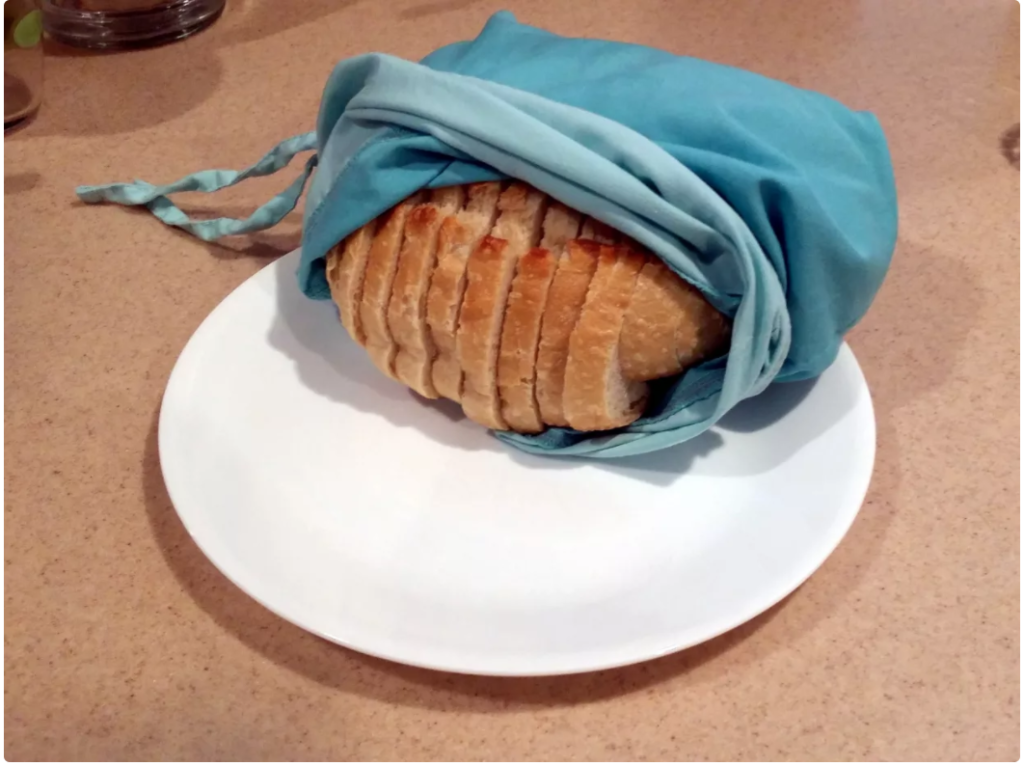
bread in a cloth bag in which my hand me downs twin sheets had arrived long time ago
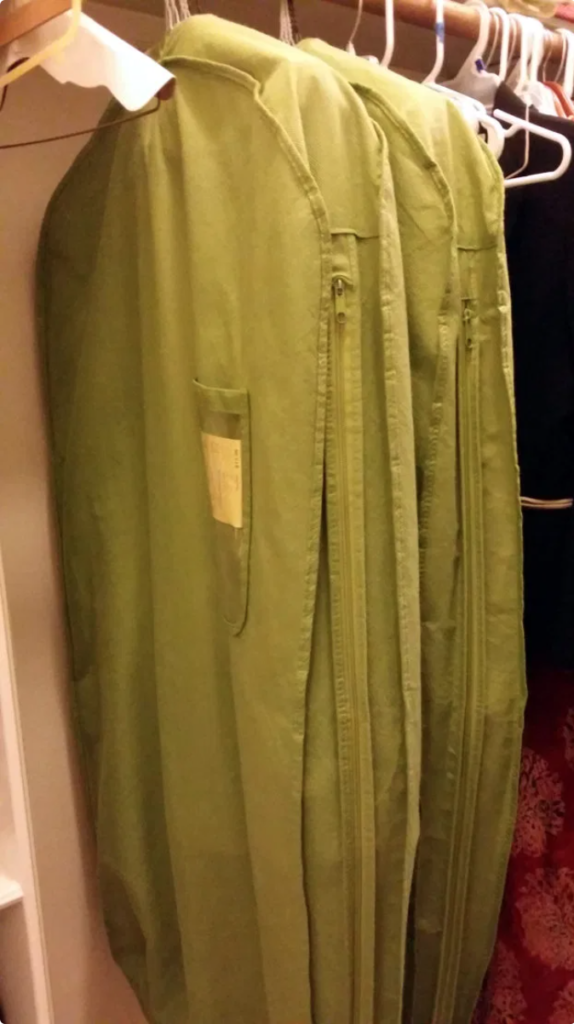
Dry-cleaned clothes-carrier
The list is growing, I guess a light duffle bag could have its permanent place in my car trunk and even serve me in Mars if I ever choose to go.
The just-to-be-prepared list doesn’t have a bottom. Well, that’s better than a landfill, honestly. It’s a deeper place to hide from the monster.
Fortifying my home and homeroom
Don’t all good things to change the world begin with the man in the mirror?
It’s easier than changing a spouse’s habits, right?
Every few weeks, when I felt comfortable with a change, I added the next achievable step. Not all of it seemed related to plastic, but they were tied into an interesting plastic-saving network.
I was spending less and less money buying supplies for my classroom as a teacher because I came up with multiple uses of things. My students were getting the mania and were stepping up to be little soldiers around the school.
Composting took away so much of volume from our garbage that only a tiny empty bag of chips was enough to hold our trash. Since it sat inside our huge plastic bin on the curbside, nobody seemed to mind.
The empty sandbags that I stored away in our garage served as our yard waste bags. That’s reusing plastic! Go away, new-bag-beast.
Zero waste parties are no-brainer spells that everybody knows but cannot pronounce. It’s a great demon-deactivator. Reusing bottles, produce bags, non-greasy Ziploc bags all added steam. I haven’t bought a box of Ziploc in years. I save my used ones in the freezer after thoroughly cleaning them for reuse.
I take my own plastic sporks in the CVS or Walgreens paper pouch. Taking my Pyrex containers to the restaurants to bring back leftovers or even our to-go orders is a fabulous repellant of plastic, pleasing the management since their supplies and waiting time are spared.
I’m all charged up using bread seals as wire-markers, saving tiny plastic chips from the landfills. I loved thrift stores and garage sales with no fancy markers and tags on their products.
Quick glance Some of the changes I’ve made in the household
| I replaced this | With that! |
| Disposable Supplies | All reusables for a zero trash party |
| Gas lighter | Matchsticks |
| Plastic bottles | Glass bottle, coffee cup, mason jars |
| Produce bags | Reusing grape packets, barcode smudged up to prevent ringing up |
| Garbage bags | Large rice bags or cereal bags |
| Aerosol sprays and perfumes | Essential oils |
| Laundry detergent | Soap nuts—it’s scary at first, then, voila! You’re hooked for life. |
| PVC Yoga mat | Recycled wetsuit yoga mat |
| Plastic laundry bags | Reusable cloth laundry bags |
| Conditioner bottles | Apple cider vinegar and orange extract |
| Chemical hair dye | Leafy-green henna and indigo paste for a rich dark-brown |
| Yard waste bags | Empty compost bag or sandbags |
| Tea bags | Loose leaf tea (it’s tastier, too!) |
My Achilles heels
I’m still far from being the best green soldier.
Here’s a quick sneak-peak of my failure zones, things I couldn’t say “NO” to and the why’s and how’s around them.
| What I couldn’t give up | How I atoned for it |
| Amazon—it saved me running-around time and some needless buying, too. | I have diligently taken all boxes, bubble wraps, air pillows to the local UPS or parcel stores – they love it! |
| Dry-cleaning business formals— couldn’t always come up with the best alternatives at home due to time crunch and expertise. | We’ve been using specially designed laundry bags to avoid the individual plastic bags for years. It was hard to make the management comply but they finally relented. Still looking for a chemically less- harsh drycleaning option around. |
| Indian grocery store where everything I need comes in plastic. No dispensers. No refills. | Buying the biggest bulk possible and reusing the containers in multiple ways— trash liners, cat’s barf pick up bag, litter bag, you name it. |
| Credit cards—huh! It’s the bane of modern society! It’s the only plastic partner I cannot do without. But I’m swiping less and less. | After expiry, I use them in many creative ways – craft work, scrapper, paper cutter, envelope opener, die-cut letters and shapes, etc. |
| Gift cards and greetings cards | Pure cash is always the right color, and always the right size, but not always the most culturally accepted method. Somehow, society values it more than the cash value it promises. I have blank cards that I creatively fill for every occasion. I make some from garbage, too. |
| Plastic garden pots with saplings | Houston Arboretum collects them for redistribution |
| Special items like medicines, cough lozenges, chocolates, husband, son, cat … you got the message! | I don’t know how much they like it, but they’re going through the exercise of being as unpackaged as possible. Aren’t human relationships meant for reuse forever? I love that! And I love these special people in my life. |
Texas Art Asylum and Terracycle—my partners in battle
Whatever I can’t use in any other way, or feel an artist might use them better, I send to the Texas Art Asylum. Check out their list of things here: http://www.texasartasylum.com/donations.html It fills my heart with joy to be able to collect boxes of these items and drive up on designated drop off days. It’s always an ongoing project in the household.

Off to Texas Art Asylum
TerraCycle is a green leader among sustainable businesses that are working to divert plastics and chemicals from the landfills.

Off to Texas Art Asylum
The missing arsenals
There are terrific things out there that I could’ve taken, but didn’t. For very long reasons.
- The 100% cotton-thread alternative to flossing would be the best for my compost pile. But my super compacted teeth don’t allow any floss intruders between them.
- There must be some biodegradable Q-tips that I could give my son! The plastic giant could’ve taken a U-turn at that.
- Moon cups for periods was too far out of my comfort zone. I’d switched to organic cotton, vegetable plastic-lined pads. It came in a plastic bag and left for the landfill in reused plastic pouches. Not too good. Guilt. Guilt. Thankfully my hysterectomy relieved me of this trip for life. Yay!
- I shuddered at the idea of pig-hair tooth-brush bristles. I tried recycled plastic but not the natural alternative. That could’ve tickled the trash giant pink.
- Homesteading far out into the country, growing my own wheat to bake bread, and live off the grid. No comments.
New spells I added this year
It gets continuously addictive going forward on this green journey. Like getting glass jars to the store for all things from dispensers, for instance, and making your own cleaning fluids with my neighbor’s super-sour oranges.
Green cosmetics are immensely power-charged to fight that plastic devil. I took a few bold strides in that direction:
- It felt lovely switching to soap nuts from the conventional laundry detergent. Kind of unbelievable at first. But it’s like bungee jumping and skydiving—gets addictive.
- Cutting open my toothpaste tubes when it seems all empty and ready to be flicked into the trash felt like a biology dissection class! Good news—I found a week’s supply packed in its crevices. I reused the cut tube pieces as funnels. The cap went to art asylum.
- I make my own toothpaste too. It leaves my teeth and gums tingling fresh.
- Packaging-free soap bars are versatile. Even better if free and clear. Supplement with essential oils for all the aroma you miss.
- Putting all the tiny pieces of leftover soaps in a mesh bag helps us use the soaps all the way to finish. The mesh had once come with four garlic in it. Why did garlic need to be packed like peas in a pod?
- I’m entirely phthalate-free when it comes to skin-care—no moisturizers, no creams—only coconut oil, grapeseed oil, and sparingly other oils as needed.
- Microbeads were always out. They’re the death-eaters of personal care.
The triumph
So, this has been my war-front commentary. I rediscovered my childhood powers – minimalism and contentment. The zen-me in my DNA that I’d pretended to disregard is fully awake. What made me volunteer at this plastic ogre-factory and the neverending rat marathons that don’t have finish lines?
I have thrown myself into this near-zero waste battle as a homemaker and a professional copywriter for promoting sustainable businesses. In plain English, I’m an undercover earth soldier who’ll never retire. In my 16-year stay in Houston, I’ve seen it lose its natural green cover to strip malls and bulk stores, car washes and emergency clinics.
As a human being, I’ll continue to fix my hydrocarbon karma (or call it Earth Tax). Every living being in this global biome, I believe, has the right to safety and survival, but not to luxury and splurging.
I’m guarding the fort, learning to find comfort in my frugal nest of love and caring. Sign up to be a fighter in this green army to chain this leviathan. Or else, you give it the license to gobble you up someday soon.
Like those garbage bags, there is no “away” where you can hide forever.
This blog was feature at www.mysplasticfreelife.com and here are some of the comments (click the image to zoom in):







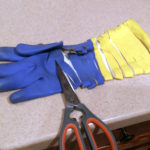








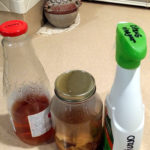










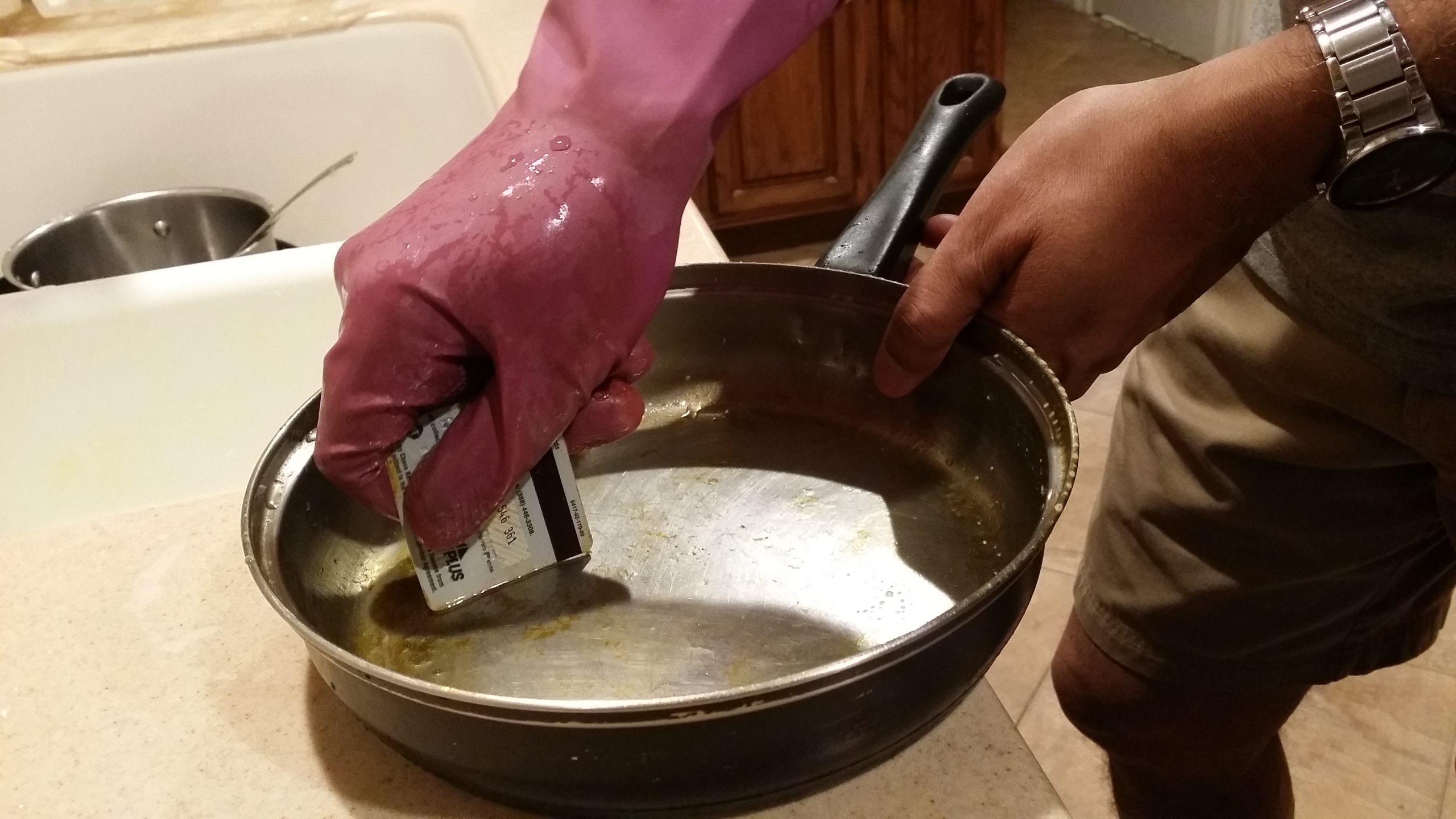

0 Comments